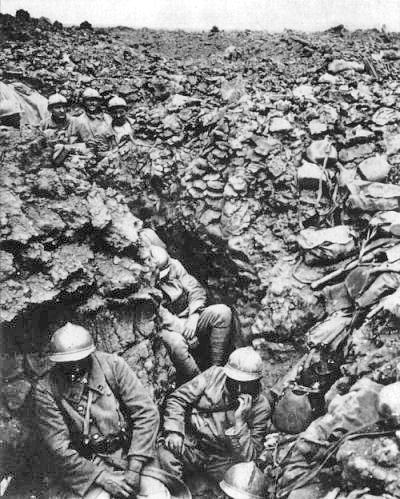
There only remains holes on the ground and stones to remind us that there was a school, houses, a farm, a post office and a city hall. This town was so severely bombed that it was never rebuilt. Fleury Devant Douaumont - a totally destroyed town.Laura and our guide in front of Douaumont Ossuary - ©FJFY The building was built by all the allied countries and pays respect to all the soldiers (including some Germain soldiers now) who died during WWI.

The ossuary should not be missed while visiting the area. It commemorates the American victory during the Meuse-Argonne Offensive during the period from September 26, 1918, to November 11, 1918, when the American First Army forced the enemy to conduct a general retreat on this front.Ībout a 10-minute drive East of the town of Verdun, you will reach the Douaumont area, which concentrates the most representative sites of the battle of Verdun.

It consists in a huge granite Doric column, topped with a statue symbolizing the angel of liberty. This is a very moving place, with a peaceful chapel and a very informative visitor center.Īrgonne Cemetery in Romagne sous Montfaucon has over 14,000 graves This is the largest American War cemetery in Europe with over 14,246 soldiers buried here. Romagne Sous Montfaucon American Cemetery.It was only in 1918, with the arrival of the US troops, that this area was retaken from the German army. By late 1917, the battles had stopped here. The Argonne forest was a difficult area to win over. However, we can always craft an itinerary to any other site, based on your wishes. There are plenty of sites to visit around Verdun and we mention here only the most visited by foreign travelers. Verdun – Meuse World War I Battlefields and Memorials It really helps better understand what happened. We are not too keen on recommending too many museums but this one is great: the scenography is very modern and keeps visitors interested. Trees are planted on purpose: they avoid erosion adn maintain the holes The Shell holes are preserved as duty of rememberance. While most of us think about « trenches » in Verdun, be ready for shell holes : trenches were built in other battlefields in the region (today, they are mainly in the woods and you need a guide to really find the most interesting ones), the Verdun battle was a battle of position and soldiers would jump from a shell hole to the next – fighting daily to gain one foot of terrain at a time. If you have an ancestor who fought, any piece of information you could supply will help us plan your trip based on this person’s history. We are very happy and very interested to plan a trip based on your family’s personal history. Touring the World War I sites with a guide really makes a difference to better understand this part of our history - ©FJFY A private guide allows you to fully immerse yourself, the time of the tour, into this exceptional period of time and history. On your own, you may not get the global overview and not fully understand what happened here between 19.

We have selected great English-speaking guides to take our travelers to the WWI sites and this is highly recommended. While the Somme and the North regions of France have battlegrounds where soldiers from all over the world fought, the combats around Verdun involved mostly the French and the American troops for the allied forces. If you don’t feel like driving 2hr30 after landing to CDG Airport, you may also stop in Reims and the Champagne region, which is half-way between Paris and the Verdun area: a nice stop to get acquainted with French wines and then jump in World War I history in Verdun. This is an easy drive on highways, and there are no main TGV high speed train lines to reach this part of France, so we do not recommend train travel to Verdun.

Verdun is a 3hr drive from Paris and 2hr30 drive from CDG Airport.


 0 kommentar(er)
0 kommentar(er)
